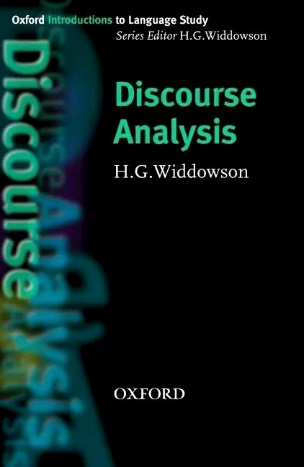Discourse Analysis by H.G. Widdowson

Text, context, discourse, communication… They seem to be simple terms, and at the same time one in two find it difficult to define them. Henry Widdowson in his manual on discourse analysis, sorts out the details. The author presents various views on this problem, as well as covers the basic terminology. The definition of new terms is given in the glossary at the end of the book. There are also a lot of engaging examples given in order to illustrate the theory. This is how the author exemplifies the concept of a communicative frame, a generally accepted social construct:
«A man was walking with his son and as they were crossing the road, a car came round a corner unexpectedly and hit the boy. The boy was taken to the nearest hospital. On seeing the boy, the surgeon suddenly let out a cry of horror: ‘My God this is my son!’».
After reading these lines, the text may seem mysterious enough. Why did the surgeon recognize his son at the hospital if he was walking with the child and saw what happened? Why did he arrive at the hospital before his son? You don't need to call Sherlock Holmes and Dr. Watson to answer those questions. What you need is knowledge of the theory of discourse, thanks to which you can destroy the social frame. The surgeon was a woman.
As can be seen from the example, although the main focus of the book is on linguistic characteristics, the author pays enough attention to the social aspect of discourse. This approach can definitely be called successful, given the growing interest of linguists in pragmatic aspects of language. Language is not perceived by human being as something separate, it is woven into everyday life and only in this way could be alive. The author pays sufficient attention to the issue of context and communicative situation, gives an extensive classification of these phenomena, writes about intertextual ties, subjects and objects of communication.



